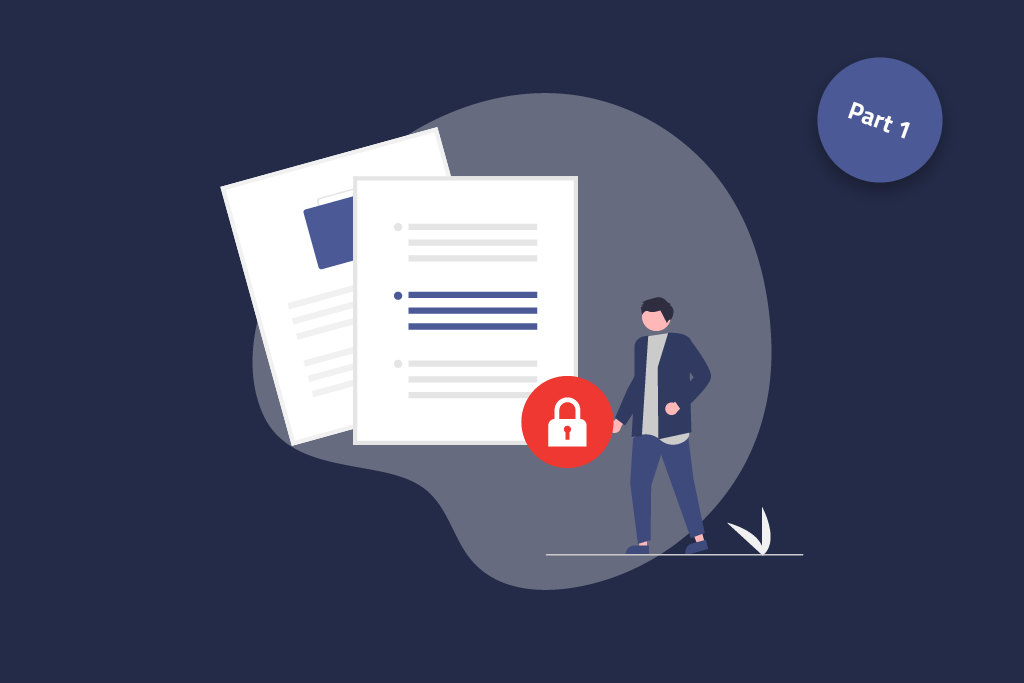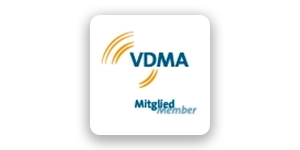Digitalization
Data Governance: About its Purpose and What You Have to Look Out For

Content
Challenges and Key Factors of Data Governance
The topic of Data Governance may seem complex at first glance. With two blogposts, we’ll bring light into the darkness. In this first article, we want to analyze the topics of essential aspects, challenges, both monitoring and measurement, as well as regulations and data protection. In the second article, “Data Governance in E-Commerce: Why PIM is the Key to More Well-Informed Decisions,” you’ll learn how a PIM can help you during the implementation of an efficient data governance.
The Essentials of Data Governance
Data governance encompasses the management, control, and security of all activity and processes within a company that revolve around data. Among other things, this includes
- defining roles and responsibilities,
- introducing guidelines and standards, as well as
- complying to legal regulations and data protection laws.
A solid data governance supports companies in successfully implementing their data strategy, guarantee data integrity and quality, and make data-driven business decisions. Central aspects of data governance are: data definitions, data standards, master data management, business sectors, and also data ownership.
Challenges of Data Governance
In today’s corporate landscape, the management must handle large quantities of data while, at the same time, fulfilling not only data quality standards but also compliance requirements. Additionally, they are to gain valuable insights in order to stay streets ahead of the competition. Some resulting challenges are:
- Efficient Management and Controlling of Large Quantities of Data: With the exponential increase of the data quantity, companies must develop efficient methods for saving, processing, and analyzing such data. This entails scalable databases, high-performance analysis tools, and skills for quickly and efficiently browsing big data.
- Assuring Data Integrity and Quality: The data quality is decisive for precise analysis and decision-making. Companies must implement robust processes in order to achieve accuracy, completeness, and consistency of data. This also encompasses data cleansing, duplicate prevention, and continuous data checks.
- Adhering to Data Protection and Compliance Requirements: Observing data protection laws such as the GDPR in Europe is a major challenge. Organizations must make sure that their data processing practices comply to legal requirements – and keep them up to date in an ever-evolving legal environment.
- Gaining Valuable Knowledge and Business Insights: Turning data into useful knowledge requires state-of-the-art analysis tools and techniques. Business Intelligence (BI) and Machine Learning (ML) are key technologies enabling companies to recognize recurring patterns so that well-founded business decisions can be made.
- Integration and Interoperability of Data Management Systems and Corporate Departments: More often than not, different business units or corporate departments work with different systems and data formats. Here, the challenge is to establish a smooth integration and cross-compatibility of all systems in order to achieve an information flow without any gaps together with a centralized view of all corporate data.
Monitoring and Measurement of Data Governance Initiatives
To guarantee the success of your data governance initiative, monitoring and measurement are indispensable. Under this heading, you’ll learn how to monitor the performance of your data governance and what kinds of metrics, indicators, and methods for continuous improvement you can apply.
Key Metrics and Indicators
The performance of a data governance initiative can be empirically measured by a variety of metrics and factors. It’s imperative to select all those that best correspond to your company’s objectives and the requirements of the involved management. Essential metrics include:
- Data Accuracy: Measures the correctness of all the data flowing in and through your company.
- Data Integrity: Checks the completeness and consistency of your data over time.
- Data Management: Evaluates the quality of defined governance guidelines and processes for controlling and implementing said guidelines.
A useful tool supporting you in your challenges for metrics and indicators is, for example, Collibra, a software platform developed specifically for data governance use cases. It helps you in efficiently managing the data processes and guidelines.
Continuous Improvement
The principle of continuous improvement is crucial in data governance when it comes to progressively enhancing the quality of your data as well as adapting to new challenges at regular intervals. Some measures for continuously improving are:
- Regularly checking the data accuracy and data integrity.
- Adjusting guidelines and process on demand to react to changes in the company or external requirements.
- Bringing relevant stakeholders on board to receive feedback and requirements which you can incorporate into the governance initiative.
Common Pitfalls and How to Avoid Them
Data governance also comes with various potential pitfalls you need to avoid in order to maintain the performance of your initiatives. Here are some examples:
- Lack of Communication and Coordination between Departments and Stakeholders: To avoid this, it’s important to develop clearly defined roles and responsibilities as well as an effective communication plan.
- Insufficient Resources for Data Management: Always make sure that both technological and personnel resources are available to successfully realize all aspects of data governance.
- Inconsistent Implementation of Guidelines: To prevent this from happening, the governance guidelines need to be formulated clearly and intuitively, on the basis of which you can then make sure that all employees know and follow these rules.
By identifying and preventing possible pitfalls, you make sure that the implementation of your data governance initiative can be carried out effectively. As a result, you can exhaust the full potential of all the data in your company.
Compliance, Data Protection, and Data Governance
Being able to adhere to legal regulations and data protection requirements is a crucial aspect of any data governance strategy. To gain a better understanding of this topic, let’s have a look at the role a data protection officer plays and, consequently, the relevant regulations.
Introducing a Data Protection Officer
An essential aspect for realizing data governance is the inclusion of a data protection offer. Their expertise lies in making sure that everything conforms to both data-related regulations and guidelines of the company. They make sure that the data organization, master data management, and data standards adhere to data protection law requirements and the company’s internal policies for handling specific data.
The data protection officer’s role encompasses, among other things:
- Controlling of data organization and data management processes
- Development and implementation of data protection regulations and processes
- Consulting and support of business units and corporate departments concerning data processing use cases
- Validation of access rights and checking of data records
- Help for establishing interoperability between different systems that process and use data

Source: acquisa/Dataprotectionofficer
Legal Regulations
The data-driven economy poses a great many challenges to companies in the field of compliance. Which is why both data management and governance ought to be adjusted to the relevant national and international regulations and directives.
Well-implemented Data Governance takes different aspects into consideration:
- Department-overarching responsibilities and clearly defined roles when it comes to using and managing data
- Abiding to internal and external directives for data storage, processing, and transmission
- Realizing guidelines that offer continuous protection of personal data
An effective incorporation of a data protection officer in your data governance combined with the implementation of legal regulations and directives will result in a strong compliance on top of better decision making in business. This is because data records will be more accurate, consistent, and secure – while also offering higher availability. It enables companies to make data-driven decisions and minimize risks in an effective manner.
FAQ on Data Governance
Here are the most frequently asked questions and corresponding answers.
Why do you need Data Governance?
Data governance is indispensable to guarantee data quality, data security, and compliance to legal regulations. Companies can set up effective decision-making processes and protect their valuable data foundation. Practical tips include defining guidelines, assigning clear roles, and conducting regular control check-ups.
What does a Data Governance Manager do?
A data governance manager develops and implements strategies in order to secure the data quality, access, and protection in a company. They coordinate teams for data guidelines, establish compliance, and control data protection measures. Their work optimizes data-founded decision making and reduces risks.
What is a Data Governance Framework?
A data governance framework is a system for managing and controlling corporate data. It defines strategies, processes, and technologies which can help maintain data quality, integrity, and access. Equipped with this, you can make well-informed decisions and apply risk management measures.
Key Factors of Data Governance
Introducing a data governance strategy across an entire company for data use is a crucial project. We’ve looked at two universally applicable key factors on how to realize this. Finally, there is a third topic to be added specifically to account for product data:
- Monitoring and Metrics: The continuous monitoring of data governance initiatives enables you to measure success and identify new potentials for optimization.
- Compliance and Data Protection: The close collaboration with a data protection officer and adherence to legal regulations secures compliance and protects, at the same time, all corporate data.
- PIM Systems: Such a system centralizes and standardizes product data, in virtue of which you can improve not only data quality and consistency but also marketing and sales processes.
What this third point, “PIM systems in connection with data governance,” is all about, is what you can learn in our second of two articles: “Data Governance in E-Commerce: Why PIM is the Key to More Well-Informed Decisions.”
From Our Blog
You may also be interested in the following articles







